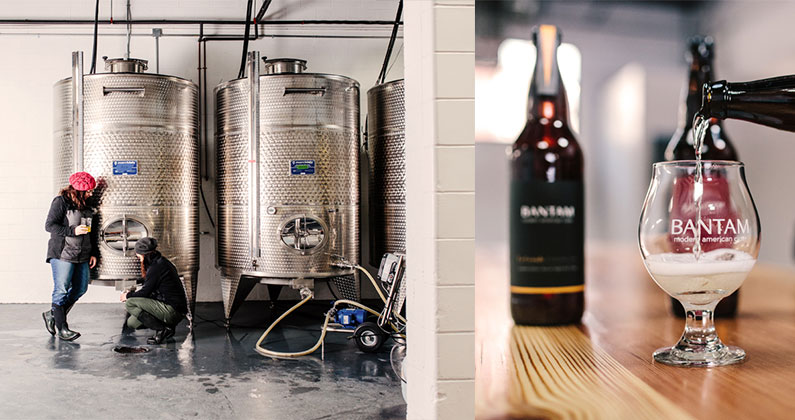When many people think about cidermakers, they often think of them on a farm, picking apples and then fermenting their cider in a barn.
Bantam Cider Co., founded in 2012 by Michelle da Silva and Dana Masterpolo, is nowhere near a farm. The Bantam Cider taproom is in Somerville, Massachusetts, a suburb of Boston, surrounded not by open fields full of apple trees, but busy streets full of college students and hipsters who love locally made products such as Fluff and Taza Chocolate.
The taproom opened in 2014 after previously making Bantam’s debut cider, Wunderkind, at various locations. Today, it features at least eight different ciders, ranging from traditional favorites such as the Sweet Scrumpy to not-so-traditional offerings like the Hibiscus Mint. Masterpolo sits down with CIDERCRAFT to chat about the cidery’s unconventional location and ciders.
Why open a cidery where there are no farms?
We’re an urban cidery. When you buy cider, people expect that you have a bottle with a photo of an apple tree on it. That’s not the way it is with beer. How many of our fellow brewers live on a farm? We don’t have an apple on any of our marketing; we just think it’s a cool beverage. We’re not farmers. We don’t pretend to be farmers. That takes a whole different set of skills.
This is where our market is. This is where our people are. We can get all of the fruit we need 45 minutes outside of the city. There are more transportation costs, but the tradeoff is we wanted to be in an urban location.
Why set aside traditional European cider style influences?
One thing people don’t realize is when cider was first brewed in America, they’d use any kind of fruit they could find or they’d use herbs. They’d put (in) anything they could to make it taste good. For us, the whole thing was to forget about any kind of European styles because there’s a lot of what American cider can be.
Why use barrels?
For our initial barrel-aged cider, we took some beautiful fruit and put some in rum barrels and some in bourbon barrels and aged it for months. It did some beautiful things. You may develop some Brettanomyces and other things. If you put cider in the same barrel, it gets its own character. You can get a pretty cool repetitive character. It’s trial and error.
The growing craft beer industry seems to be an inspiration.
When we first started drinking cider, you would have only seen Woodchuck and I think Hardcore. People saw cider as one-dimensional. It can be as creative as you want it to be. Like craft beer, cider doesn’t have to be one-dimensional. We’ve tried everything. Yeast is another variable to influence cider. We’ve fermented with saison yeast, we’ve done ale yeasts, we’ve done sake yeasts. We’ve done a Smoked Saison cider.
Making cider is the easiest thing anyone can do. It’s exponentially harder to make a really good cider. Whenever we have a lot of people at the taproom, we’ll get one or two people in the crowd who will say, “Cider is not my thing.” By the time they leave, they’ll pull us aside and say, “We really liked these ciders.”






